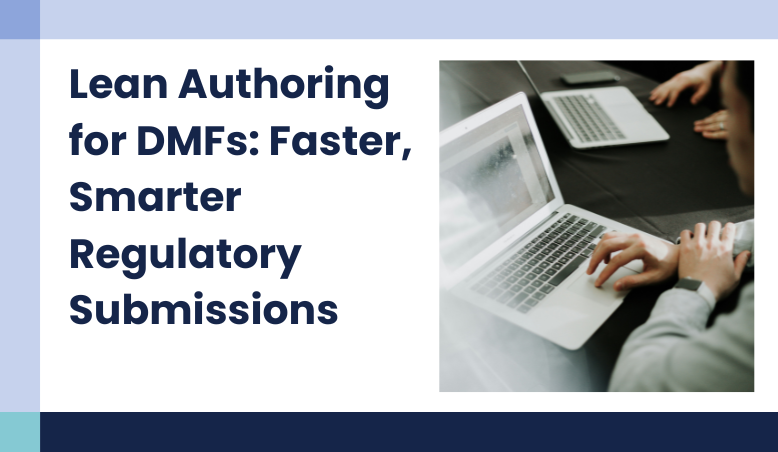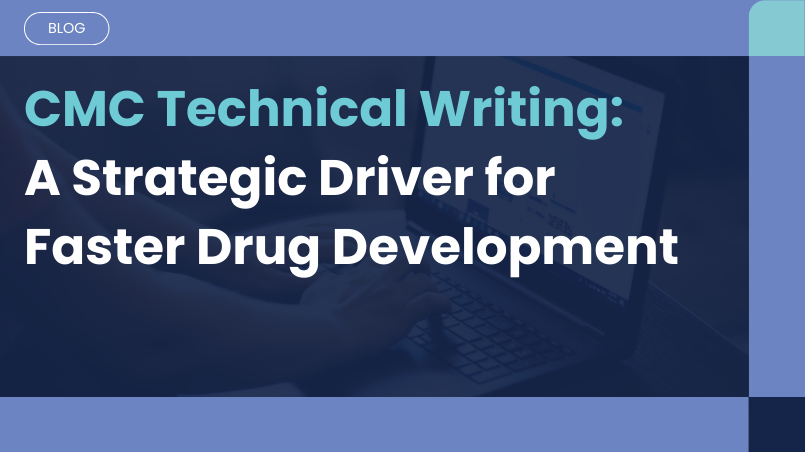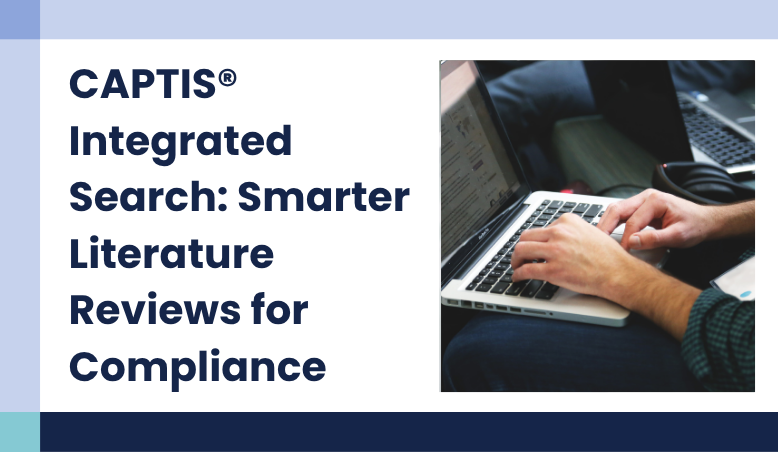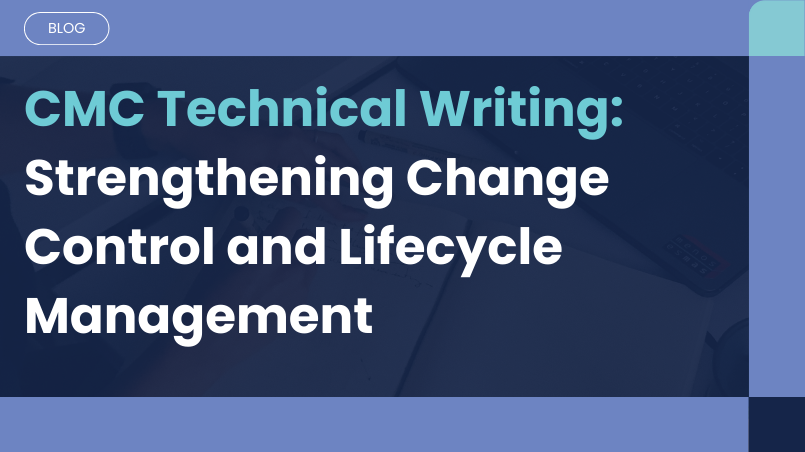CMC Technical Writing: Strengthening Change Control and Lifecycle Management
Lean Authoring for DMFs: Faster, Smarter Regulatory Submissions

08 Aug, 2025
In an industry where time-to-market is a competitive differentiator, regulatory teams are under immense pressure to deliver submission-ready documentation quickly, accurately, and in alignment with evolving regulatory expectations. One document that demands special attention in this regard is the Drug Master File (DMF).
DMFs are critical components of drug product applications – yet their preparation often remains a bottleneck in the regulatory process due to disjointed authoring, inconsistent formatting, or a lack of version control. With increasing scrutiny from global health authorities, life sciences companies must evolve how they approach DMF development.
In our first blog in this DMF series, we introduced the different types of DMFs, their purpose, and how global regulatory bodies like the FDA, EMA, and PMDA handle them. Our second blog focused on common mistakes in DMF submissions and the impact of missing data, poor formatting, or unstructured processes.
This third blog addresses the solution: implementing Lean Authoring to optimize DMF creation, improve regulatory compliance, and significantly reduce review timelines.
Lean, Clean and Compliant: The New Standard for DMF Submissions
In today’s fast-paced pharmaceutical landscape, time is more than money – it’s access, innovation, and competitive advantage. One often-overlooked opportunity for acceleration lies in how Drug Master Files (DMFs) are authored. Traditional DMF preparation can be slow, repetitive, and inconsistent. But by adopting lean authoring principles, companies can significantly speed up DMF review and approval timelines.
How Lean Authoring Accelerates DMF Review:
- Submit a High-Quality DMF
- Well-structured, complete, and logically organized.
- Clear justifications for all specifications, tests, and controls.
- Early Submission & Cross-Referencing
- Submit the DMF well ahead of the ANDA/NDA.
- Grant LOAs early and confirm with applicants.
- Respond Promptly to IRs
- Set up systems to track and respond to Information Requests or Deficiency Letters without delay.
- Use Electronic Submissions Gateway (ESG)
- Submit DMFs in eCTD format to ensure faster handling and better tracking.
- Communicate Effectively
- Maintain regular contact with ANDA/NDA applicants.
- Keep LOAs and contact info current.
- Ensure Inspection Readiness
- Facilities must comply with GMP and be ready for FDA inspection post-submission.
Why Lean Authoring Matters Now More Than Ever
The traditional approach to DMF authoring – often involving siloed teams, disconnected data, and redundant document iterations is no longer sustainable. Regulators expect well-structured submissions that follow CTD and eCTD standards, provide scientific justification for every specification, and demonstrate control over impurities, stability, and GMP readiness.
Lean authoring is not just about writing faster – it’s about writing smarter. By focusing on clear structure, concise language, reusable modules, and validated content, regulatory teams can minimize rework and drive faster approvals.
Additionally, lean authoring allows for better knowledge transfer, reduced training time for new team members, and simplified updates when product or process changes occur.
Download the Lean Authoring Checklist
To help regulatory teams implement lean authoring principles effectively, Celegence has created a Lean Authoring Checklist. This free resource serves as a practical guide for structuring your DMF content, aligning with eCTD formatting requirements, and ensuring completeness before submission.
🔗 Download the Lean Authoring Checklist
Whether you’re developing a Type II DMF for the first time or updating an existing file, this checklist can help you stay organized and on track.
How Celegence Can Help
Celegence works with pharmaceutical, biotech, and API manufacturers to streamline global regulatory submissions, including all aspects of DMF preparation and lifecycle management.
- Our team of regulatory experts supports you in:
- Implementing lean authoring strategies
- Aligning content with ICH and regional CTD requirements
- Structuring and formatting content for eCTD readiness
- Responding to deficiency letters and regulatory feedback
- Managing Letters of Authorization (LOAs) and cross-referenced DMFs
- Supporting inspection readiness and GMP alignment
In addition, our proprietary platforms and technology-driven workflows enable real-time collaboration, version control, and regulatory tracking – ensuring your DMFs are always audit-ready.
Need support for your next DMF submission?
Contact us at info@celegence.com to learn how our expert services and solutions can improve your submission timelines, quality, and compliance.
Other Related Articles

02 Dec, 2025

11 Nov, 2025

04 Nov, 2025

21 Oct, 2025

08 Oct, 2025




